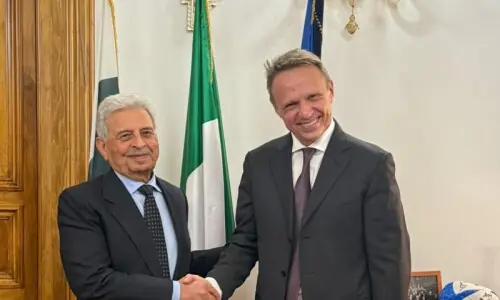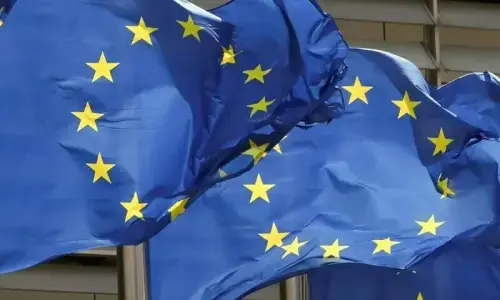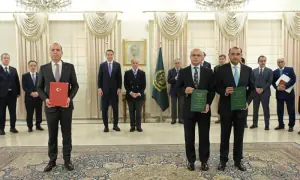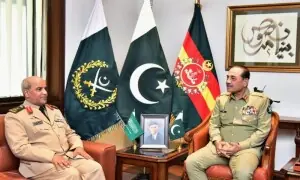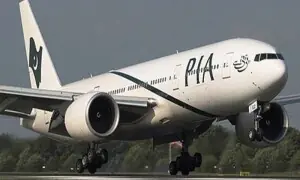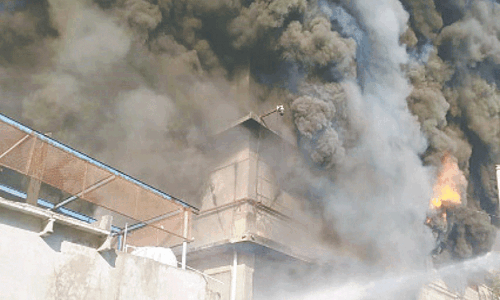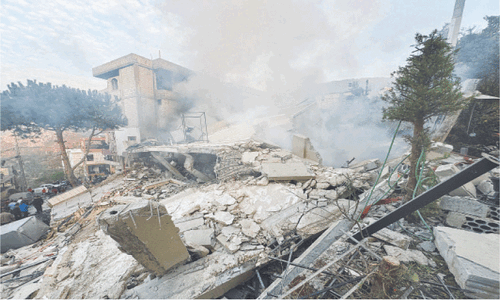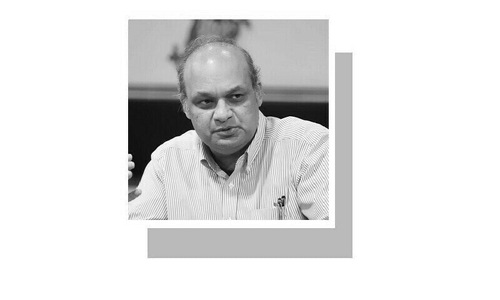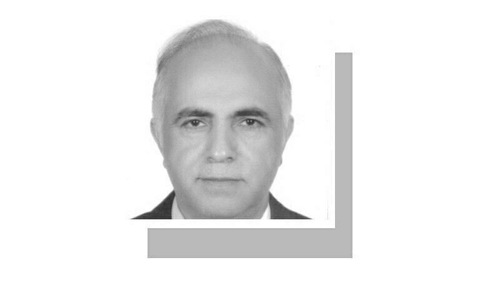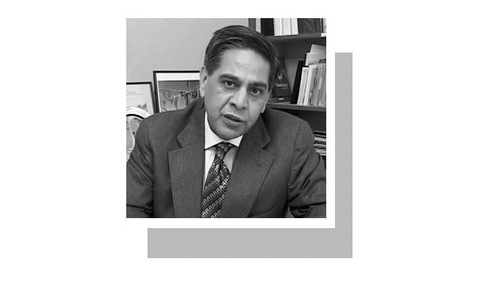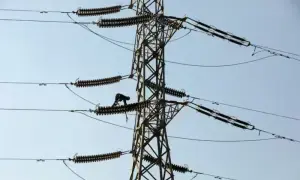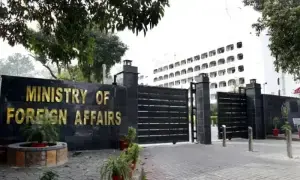Govt proposes Rs1.29tr for defence spending

ISLAMABAD: The government on Friday proposed Rs1.29 trillion defence allocation for next fiscal year representing an 11.8 per cent increase over the original allocation for the outgoing year.
Federal Minister for Industries Hammad Azhar, while presenting the budget in the National Assembly, said “defence and internal security have been given adequate attention in the budget”.
The military had last year forgone a major hike because of the economic challenges then facing the country and settled for a raise of 4.74 per cent, but by the end of the year it had overshot the allocation by 6.33 per cent.
The original allocation for last year was Rs1.15 trillion, but according to revised figures presented before the lower house of parliament, about Rs1.23 trillion had been spent. It has now virtually become a norm for actual defence spending incurred in a year to be higher than the original allocation.
The allocation represents 11.8pc increase over outgoing year’s budget
The amount earmarked for defence sector makes 17.68 per cent of the total expenditure planned for the next year, which is estimated to be Rs7,294.9 billion. Last year this share was 14 per cent.
The share of the defence services in the budget explains how much money is going to armed forces in real terms.
Meanwhile, when measured against the GDP, its share is 2.82 per cent. The size of the GDP is estimated to be about Rs45,643 billion. The original allocation for the outgoing year was 2.62 per cent of the GDP.
Calculating defence budget as percentage of the GDP indicates its burden on the national economy. Pakistan’s defence spending as a percentage of the GDP is the highest in the region with Chinese budget as share of GDP being 1.9 per cent, India 2.4 per cent, and Iran 2.3 per cent.
Comparison of the proposed defence expenditure with the overall expenditure and as share of the GDP to a great extent resemble that of the 2018-19 budget presented by the previous PML-N government, when it was 18.5 per cent of the total pie and 2.87 per cent of the GDP.
The figures given for defence spending do not give a full picture of the amount actually being spent on defence. One major exclusion is the apportionment of pensions for the retired troops. The government would be paying Rs369 billion under this head next year – a 12.8 per cent increase over the previous year. Moreover, major acquisitions by the armed forces are not reflected in the budget and so is the case with the nuclear programme.
A closer analysis of the proposed figures reveals that the biggest hike in expenses is coming under the head of civil works, which accounts for the funds marked for maintenance of existing infrastructure and construction of new buildings. The civil works component is set to grow by 26.14 per cent to reach Rs155.5 billion.
Two major civil works projects currently being undertaken by the military are fencing of borders with Afghanistan and Iran and construction of border posts.
Operating expenses, which cover transport, POL, ration, medical treatment, and training, would get Rs 301 billion – a 13.77 per cent raise, while another Rs357.7 billion would go for physical assets – the head that accounts for local purchase of arms and ammunition and other procurements – a 13.43 per cent increase.
The employees’ related expenses would get the lowest increment of 5.6 per cent. This head, however, consumes most of the defence budget. An amount of Rs475 billion has been reserved for this purpose. A leaked joint services headquarters memo had shown that armed forces were seeking a 20 per cent increase in salary. However, that has not happened,
Looking at the distribution of the money among various services shows that the share of the Army has marginally increased to reach 47.55 per cent as compared to PAF’s 21.25 per cent, Navy’s 10.85 per cent and inter-services establishment’s 20.33 per cent.
Last year the army’s portion was 45.4 per cent, PAF 22 per cent, Navy 11.3 per cent, and inter-services establishment 21 per cent.
The Army would this year be getting Rs613 billion, PAF Rs274 billion, Navy Rs 140 billion, and inter-services establishment Rs262 billion.
Published in Dawn, June 13th, 2020
Baqir Sajjad Syed is the Foreign Affairs and National Security Correspondent for Dawn. His career of over 25 years spans print and broadcast journalism. He is a former UN Reham al-Farah Fellow and held a Pakistan Fellowship at the Woodrow Wilson Centre in Washington, DC. He can be found on X at @baqirsajjad.


